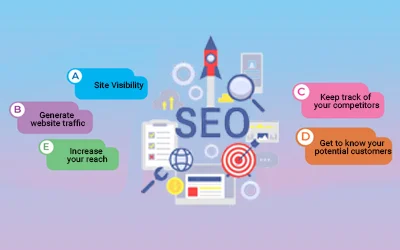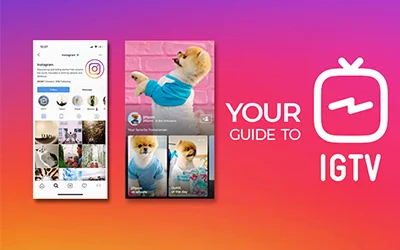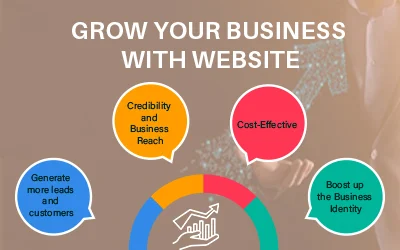Java has remained the preferred language for building scalable and high-performance web applications globally. As demands shift, the latest Java frameworks emerge while established ones grow stronger to serve enterprise needs.
This blog covers the top 8 proven and most popular Java frameworks that remain ideal for developing modern, scalable web applications even in 2024.
Most Popular Java frameworks
This is a list of some of the most popular Java frameworks in 2024:
- Spring
- Hibernat
- Struts
- Wicket
- Grails
- Play
- Vaadin
- Blade
Lets explore these Java frameworks in detail to know their advantages, applications, and features:
Spring
Hardly needing an introduction, the Spring framework pioneered the Java frameworks list by its core capabilities like dependency injection and inversion of control. It is becoming universal in Java application architecture.
Below are some key features:
- Non-invasive, modular architecture allowing easy enhancement
- Integrates seamlessly with other popular J2EE frameworks like Struts and Hibernate
- Dependency injection minimizing tight coupling across application layers
- Templates to simplify adding caching, transactions, validation, and more
- Unified programming model cutting across web apps, microservices, batch processes
With the above and more, the feature-rich Spring has become one of the most popular Java frameworks and significantly accelerates end-to-end application development leveraging proven architecture.
Hibernate
Hibernate is one of the powerful Java frameworks that aims to simplify Java data access by replacing manual JDBC and SQL code with automated table-object mapping.
Key capabilities include:
- Minimizes SQL coding manual effort through automated ORM
- Boosts productivity and application maintainability
- Out-of-the-box integration with popular databases like Oracle, MySQL and Microsoft SQL
- Available as open source framework with a vibrant ecosystem
- Advanced caching options improve data access performance
By supporting object-oriented application development, Hibernate brings a paradigm shift for working with traditional relational database systems using Java.
Struts
A veteran of Java frameworks for web development, Apache Struts remains a popular open-source MVC-based framework for crafting elegant web applications using Java.
Some core features comprise:
- One of the original MVC Java frameworks designed ground-up for Java web apps
- Configuration over code code-based approach allows quick framework initialization
- Built-in AJAX support and seamless integration with other Jakarta/Java EE technologies
- Modular architecture allows extending capabilities easily via custom plugins
- Tag libraries minimize repetitive Java code needed for crafting UIs fast
The Struts framework has been helping development teams build web applications for over a decade. It uses proven architecture principles to make applications more maintainable and extensible. This is one of the most popular Java frameworks that adhere to standardized MVC architecture principles from the outset.
Wicket
Apache Wicket is one of the Java frameworks for backend that aims to make building Java web UIs faster through a component-based approach. It allows code reuse coupled with instant enhancement without recompilation.
Highlights include:
- Reuses UI components leading to DRY web application code
- Frontend enhancements are possible without recompiling/rebuilding the backend
- Integrates well with other Java frameworks like Spring and Hibernate
- Powers Wikipedia site built ground up using component-based Java
- Strong refactoring support through Java IDEs like Eclipse and Idea
Wicket, as a Java framework for web development, enables simplified web application development with reusable components, separation of concerns, and ease of enhancement.
Grails
Inspired by the Ruby on Rails convention over configuration approach, Grails is one of the easy-to-learn, Groovy-based open-source full-stack latest Java frameworks. It is tailored for extraordinary developer productivity in building web apps in the Java ecosystem.
Key features include:
- Embraces convention over configuration for rapid application development
- Strong out-of-the-box integration with Spring Java frameworks and Java platform
- Included unit testing and integration testing framework lowers the entry barrier
- An extensive library of plugins further boosts developer productivity
- True polyglot - use the right Java/Groovy mix based on the application need
Grails in the Java frameworks list substantially boost teams’ ability to deliver complete Java web applications significantly faster without compromising scalability.
Play
Pioneering stateless MVC and reactive streams-based web development leveraging Scala and Java. The Play remains a popular choice in Java frameworks for backend for delivering today’s resilient web applications.
Some key highlights are:
- Slick hot code reload shortens code-build-run cycles during development
- Modern stateless, non-blocking, and reactive web architecture
- Nearly seamless interoperability with a wider Java platform
- Comes baked in with unit testing and integration testing capabilities
- Ability to leverage Scala, Java, and reactive programming styles
With capabilities like the above perfectly suited for cloud scale, the Play continues to be one of the most popular frameworks for web development.
Vaadin
Vaadin allows building rich, high-performance web UIs and frontends using server-side Java without worrying about cross-browser testing. This Java frameworks for backend is a boon for productivity.
Its highlights include:
- Clean and intuitive Java API for rapid web UI component development
- Java-only type safe web application development eliminating runtime errors
- Support for integrating popular CSS frameworks like Bootstrap
- Powerful built-in routing system with parameter and nested route support
- Avoid hassles associated with client-side JS approaches
By enabling entire UI development using server-side Java, the Vaadin Java frameworks for web development aim to boost productivity for web teams significantly.
Blade
Blade is one of the increasingly popular simplistic, fast, and lightweight latest Java frameworks tailored for today's dynamic web delivery needs.
Its key highlights comprise of:
- Provides an intuitive pure Java toolkit following elegant MVC design patterns
- Comes prepacked with a feature-rich embeddable Jetty application server
- Enables adding additional capabilities easily via plugin extensions
- Has inbuilt protection for security attacks like cross-site scripting and request forgery
- Allows rapidly shipping portable, secure Java web apps and microservices
Blade in the Java frameworks list allows developers to be highly productive in crafting Java-based web solutions.
Conclusion
This brings us to the end of discussing the top 8 popular, mature, and proven Java frameworks for web development. These will remain ideal for developing a wide variety of modern, scalable web applications even in 2024. Teams can assess their capabilities and internal skills to determine the best framework choices and mix-and-match architecture for their specific application needs. They can also identify and select associated partner products.
To learn more about using these frameworks for your next web project or hiring web developers, contact Invoidea, a leading IT company in Delhi.
Moreover, for help with selections or getting applications built leveraging this Java frameworks list, reach out to us for java-based web development services in Delhi today.
You can check-out our list of top front end technologies to consider in 2024










